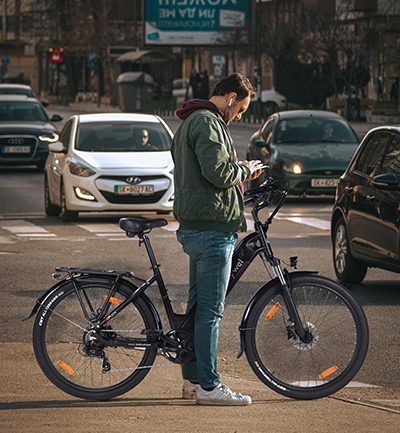As a convenient and environmentally friendly means of transport, e-bikes play a multifaceted role in promoting a healthy lifestyle.
I. Physical Exercise
Moderate Physical Activity
E-bikes are not entirely motor-driven. During riding, people still need to pedal, which ensures that the muscles of the body can be exercised. Compared with traditional bicycles, the power-assisted function of e-bikes allows riders to adjust the intensity of exercise according to their physical condition. For example, when you are physically fit, you can reduce the motor boost and increase your own pedalling power, so that the leg muscles such as quadriceps, hamstrings and calf muscles can be fully contracted and stretched, thus achieving a workout effect.
Even when using higher motor assistance, the body needs to be balanced while riding, which engages the muscle groups in the abdomen, lower back and back to maintain a stable riding position. Continued engagement of these muscles helps to strengthen the core muscles and improve balance and coordination.
Cardiovascular Health Improvement
Riding an e-bike increases the heart rate and improves blood circulation. Depending on the intensity and length of the ride, the heart will deliver oxygen to all parts of the body more efficiently. Regular riding helps lower resting heart rate and enhance cardiorespiratory fitness. For example, riding an e-bike for more than 30 minutes at a moderate pace provides the heart with a degree of exercise that is similar to a light aerobic workout. This regular cardiovascular exercise can reduce the risk of cardiovascular diseases such as heart disease and high blood pressure.
Joint-friendly workouts
For some people who have joint problems or are weaker, e-bikes are an ideal form of exercise. This is because when riding, the body weight is mainly supported by the bike’s seat and pedals, reducing the burden on the joints, especially the knees and hips. Compared with running and other sports, the riding action of e-bikes is smoother and more continuous, with less impact, which enables the muscles around the joints to be exercised while avoiding excessive damage to the joints, thus enhancing the stability of the joints.
II. Mental Health
Reduce pressure
In the process of riding e-bikes, people can temporarily stay away from the stressors of daily work and life. The body secretes endorphins during exercise, a neurotransmitter that brings a sense of pleasure and relaxation. Whether you are riding on scenic country lanes or around parks in the city, the fresh air and ever-changing environment help to relieve tension and reduce anxiety and stress.
Enhances Mental Health
E-bike riding can boost self-confidence. A sense of achievement occurs when riders are able to successfully complete a distance or master a new riding skill. Moreover, social interactions during cycling, such as communicating with other cyclists or participating in group cycling activities, can increase social support, reduce loneliness and have a positive impact on mental health.
III. Aspects of living habits and travelling modes
Increasing time spent outdoors
E-bikes make people more willing to go out and increase the amount of time spent outdoors. Riding an e-bike gives people more direct access to the natural environment and community than taking public transport or driving a car. Outdoors, people get more sunlight exposure, which promotes the synthesis of vitamin D, which is important for bone health and the proper functioning of the immune system. More time spent outdoors also broadens people’s horizons, allowing them to gain a better understanding of their surroundings and community, and enriching their life experience.


